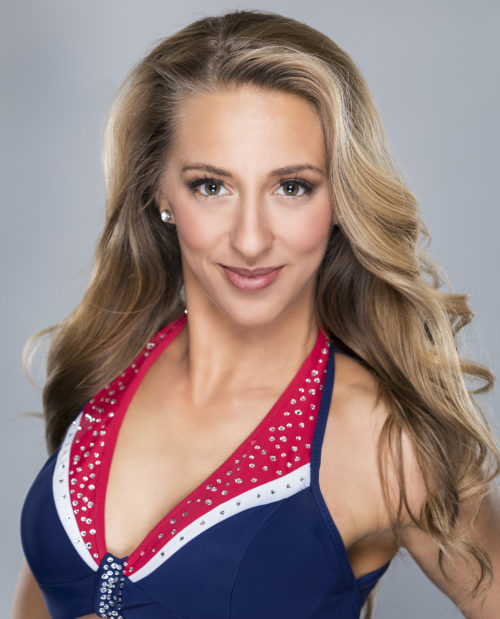Hi everyone, Science Cheerleader Hilary here to introduce you to New England Patriots Cheerleader Michaela! Michaela holds a Doctor of Physical Therapy degree, her passion for which was ignited as a dancer when she was young. Read on below to learn more about Michaela’s life with the Patriots and with her patients!
 What turned you on to STEM and when? My mom is a nurse; I admired her when I was growing up because she had the solution to everyone’s health concern, both at work and in her daily life, and was always able to make everyone feel at ease. I knew at a young age that when I grew up I wanted to help people every day. I was fascinated by learning about the human body while in science classes throughout grade school. In high school, a dance knee injury gave me my first experience with physical therapy, which further helped me realize that my interest in anatomy, background in dance, and passion for helping others could all be combined into one career.
What turned you on to STEM and when? My mom is a nurse; I admired her when I was growing up because she had the solution to everyone’s health concern, both at work and in her daily life, and was always able to make everyone feel at ease. I knew at a young age that when I grew up I wanted to help people every day. I was fascinated by learning about the human body while in science classes throughout grade school. In high school, a dance knee injury gave me my first experience with physical therapy, which further helped me realize that my interest in anatomy, background in dance, and passion for helping others could all be combined into one career.
Please describe what you do in your science career on a daily basis. I am a physical therapist, so I spend most of my day helping people who have had been injured or had surgery. I see about 16 patients a day and we work together to help make their pain go away, improve their balance, teach them how to walk, and make their arms, legs and backs move and work the right way so they can do their jobs or hobbies. Every person has a different goal for physical therapy, sometimes they need to re-learn how to walk after surgery and sometimes they need to be able to do a handstand with no pain to go back to their gymnastics team. I see all different people who are different ages, from 7 years old to 100 years old. I use many different tools to help me understand if my patients are improving; I measure the angles of their joints (goniometer), the circumference of their arms and legs (tape measure), and how fast they can walk or run (timer), among other tools.
How do the qualities that make/made you a great cheerleader benefit you in your STEM career? I think to be a great cheerleader you must have a positive attitude and strong work ethic. I think the same qualities have benefited me in my STEM career, learning what I needed to know to help my patients took persistence and strong work ethic, but also I had to be passionate and excited about what I was studying. Also, just like being a cheerleader, my passion for what I do inspires me to learn new skills to further help my patients. Being a team player is also important for both cheerleading and in my STEM career, being able to work well with others helps to improve and acquire new skills to be the best you can be.
Have you faced a situation where you had to challenge a stereotype about cheerleaders [or being a woman in a STEM field]? I’ve been told I shouldn’t and couldn’t be both a cheerleader and scholar while I was studying in my field in college. Despite this advice I continued to pursue both my passion for performing and for physical therapy, each were such a large part of my life and who I was. I was not willing to give either up. Luckily I continued to pursue both as, it has led me to my dream career and cheering for the best team in the NFL. I think it’s important to promote that cheerleaders are scientists too; it not only helps expand the mindset of our fellow citizens but promotes support for the future scientist and cheerleaders of the world to pursue all of their dreams to change the world.
What advice would you give your 12-year-old self? Believe in your dreams, as simple as it seems; if you believe you can do it you are more than halfway there. Also, always give your best effort because if you always do your best you can always be proud of your work, no matter what the rest of the world may think.
What’s one thing people might find especially surprising about you? I’ve never traveled to the West Coast!
What does it mean for you to be working in STEM?In society, my career helps others to improve their movement to optimize the human experience. In my field, I would like to continue to work towards finding the most effective treatments to improve positive outcomes for my patients. In my career, I would like to continue to progress our ability as a profession to prevent acute and chronic injuries in the young dancer and adolescent athlete to help our youth continue to be active for their lifetime.
